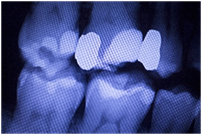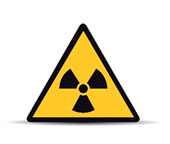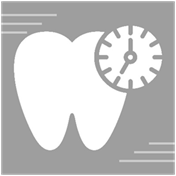X-rays also known as radiographs, are an essential part of your dental treatment plan. X-rays are used to diagnose early signs of tooth decay in areas that the dentist cannot see with the naked eye.
Teeth and bones are very dense, so they absorb the x-rays while the x-rays pass more easily through gums and cheeks to give a clear view of the health of your teeth, jawbone and supporting tissues.
 Use of X-rays
Use of X-rays
Early tooth decay does not show many physical signs. X-rays are able to detect decay under fillings or between teeth. They will also show abscesses and infections in the roots of teeth. The dentist will also use x-rays to determine the level and health of bone present in your jaw. This is especially important prior to teeth straightening or dental implant treatment as it can affect the outcome of these treatments.
In children x-rays can also help to show where their adult teeth will erupt or in adults where wisdom teeth are.
 Dangers of X-rays
Dangers of X-rays
The radiation received from a dental x-ray is incredibly small and much less than is received from natural sources, including minerals in the soil and from our general environment. Constant advances in technology, including the shift to digital imaging plates, and the fact that the dentist will only take X-rays when they are clinically necessary mean that the risk from dental X-rays are kept as small as possible.
At Valley Dental Practice, we use digital imaging plates to take any dental x-rays required. The main advantage of using digital imaging plates is that you, the patient, receives’ a much lower dose of radiation as the plates are extremely sensitive. The result is instant and can be seen immediately on our monitor in the surgery. This will make discussions about our findings much better as the image is much larger and easier to view than our original x-rays.
The dental team take hundreds of x-rays every week and so to limit the amount of radiation they receive they will leave the room when taking x-rays. Dental staff are regularly tested to measure the amount of radiation present in their system with many nurses having negligible levels after 30 years of working within the surgery environment.
 Frequency of X-rays
Frequency of X-rays
When you first attend the dentist will recommend that you have X-rays taken, unless you have had X-rays taken very recently. X-rays help to form a fundamental part of your dental health record and the dentist will build on this every time you visit the practice.
After this, x-rays are recommended every 9 to 24 months depending on various dental risk factors, including history of decay, age, and condition of your mouth.
Pregnancy
You should inform the dentist if you know or believe that you may be pregnant prior to any treatment. They will not take x-rays until after the baby is born unless they really have to.
REMEMBER Prevention is better than cure and that is why x-rays are used.
If you need more information or would like to discuss how dental x-rays are used during your dental treatment call Valley Dental Practice on 01255 220322 and book a check-up.


 Use of X-rays
Use of X-rays Dangers of X-rays
Dangers of X-rays Frequency of X-rays
Frequency of X-rays


